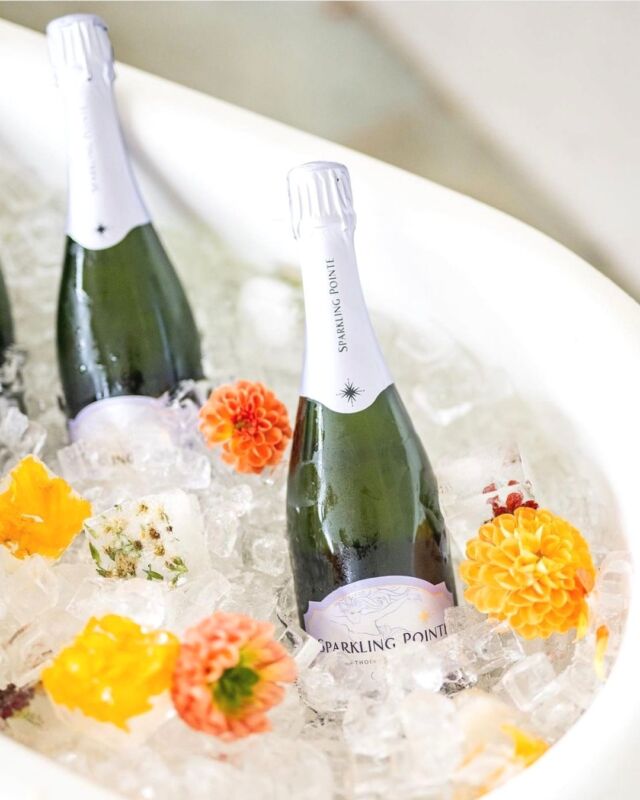Spring weather is often chilly and gray here on the East End, but an easy, effective way to add low-maintenance color to your property is to plant some spring-blooming shrubs. Shrubs bring color to the garden year after year. Visually they help to fill the middle ground between tall trees and shorter perennial and annual flowers. Most are easy to care for, requiring little more than removal of storm-damaged branches and an occasional pruning. Unless your landscape is very formal, you won’t need to clip your shrubs into balls or pyramids. They’ll look just fine when allowed to assume their natural shapes. Besides, flowering shrubs generally produce the most flowers when you leave them unsheared.
Shrubs aren’t just boring green bushes. Some have lovely, sometimes fragrant, flowers. Some bear fruit that’s edible for people or wildlife. Others sport golden, purple, or variegated (multicolored) foliage. Your bush may produce pretty flowers in spring, berries in summer, and colorful foliage in fall for multi-season interest. Evergreens retain their color, which can range from silvery to bluish to gold, all year ’round.
On a small property a large shrub, perhaps a tall butterfly bush, panicle hydrangea, or vitex, can take the place of a tree, providing form and height. Shrubs are generally less expensive to purchase than trees, another plus.
Shrubs Worth Planting
For the earliest spring color plant witch hazel (Hamamelis). Its fragrant narrow-petalled flowers (resembling clumps of ribbon) appear in late winter to early spring. They may be bright yellow, rich gold, orange, russet, or deep red. In fall the leaves glow golden yellow.
Forsythia is the traditional harbinger of spring. Its brilliant yellow flowers are spectacular, but for a softer-colored variety look for Lynwood or Spring Glory. Plant forsythias where they can grow to their natural spreading, arching form. Shearing them into constrained shapes ruins their look and reduces flowering.
Azaleas and rhododendrons are springtime classics, with flowers in shades of pink, purple, red, white, yellow, and orange. Consider planting one of the Encore azaleas that rebloom in fall. And please don’t shear your azaleas into balls or hedges. If a rhododendron is your heart’s desire, be sure to find out its mature height and spread and give it room to grow. Many a living room window has been obscured by a rhododendron planted too close to the house.
Some old-fashioned flowering shrubs can reward you with absolutely charming flowers. Daphne bears round clusters of sweetly fragrant white or pink flowers. The early blooming Koreanspice viburnum (Viburnum carlesii) offers deliciously scented white snowball blooms. Bridalwreath spiraea (Spiraea X vanhouttei) covers its arching stems with tiny white flowers in late spring and can be lovely planted alongside a driveway or path. Another beauty for spring is slender deutzia (Deutzia gracilis). Growing just 2 to 4 feet high, it lines its gracefully arching branches with masses of small white flowers in May. The leaves turn deep burgundy in fall.
For sheer olfactory delight over a couple of weeks in spring, it’s hard to beat lilacs. Their perfume is all the more intoxicating because it’s gone so soon. An old-fashioned lilac (Syringa vulgaris) can live for decades with little care except for some watering during prolonged dry spells. And oh, those flowers.
Writer, editor and author Anne Halpin has published 17 books on gardening and related subjects and edited many more. She has been living and gardening on the East End of Long Island for 23 years, and has cared for many private gardens here.










![Dive into a week-long celebration of exquisite dining experiences with Long Island Restaurant Week! From gourmet feasts to hidden gems, this is your passport to a world of flavors. The culinary adventure lasts now through Sunday, February 4th. [link in bio]](https://hamptonsrealestateshowcase.com/wp-content/uploads/sb-instagram-feed-images/424429319_323460817321735_5618008070091767644_nfull.jpg)
![Set to be one of the tallest buildings in Sunny Isles and within very close proximity to Miami Beach, Bal Harbour Shops, and the Miami Design District, the @srresidencessib has been crafted to evoke a feeling of harmony with the majesty of nature in its purest forms. Each home—remarkable in its volume and scale— represents the next in modern luxury with expansive layouts, breathtaking proportions of master bedroom suites, and the exquisite selection of the finest materials and finishes. [link in bio]](https://hamptonsrealestateshowcase.com/wp-content/uploads/sb-instagram-feed-images/422750601_949143036552944_6719399525785290858_nfull.jpg)
![@tataharperskincare is a brand of natural skincare products that are designed to deliver real results without the use of synthetic chemicals. The company was founded by Tata Harper, a pioneer in natural luxury skincare who couldn't find 100% natural products that met her standards of efficacy, quality, and purity. You can shop all treatments and oils at @tenetshop in Southampton! [link in bio]](https://hamptonsrealestateshowcase.com/wp-content/uploads/sb-instagram-feed-images/423414770_969842424507079_5853121257190937345_nfull.jpg)
![Located south of the highway in Water Mill, our home of the week is a 10,400± sq. ft. new construction estate set on nearly 1± acre with a detached 3-car garage, a pool cabana, and a heated gunite pool and spa. Indulge in the ultimate luxury lifestyle at 91 Swans Neck Lane, where leisure and entertainment meet seclusion and serenity. Represented by @bespoke.realestate. [link in bio]](https://hamptonsrealestateshowcase.com/wp-content/uploads/sb-instagram-feed-images/422870950_1041350420315152_3955490862347124304_nfull.jpg)
![After a very exciting bidding war, La Dune has sold at the @sothebys "Visions of America" auction for $88.5M! The property, once the most expensive listing the Hamptons and famed for an appearance in the Woody Allen film “Interiors,” had been on and off the market since 2016. It was most recently listed in 2022 at $150M. [link in bio]](https://hamptonsrealestateshowcase.com/wp-content/uploads/sb-instagram-feed-images/421035980_764229365568560_2560982266395777347_nfull.jpg)
![From timeless totes to sleek carry-ons, @parkerclay has your travel game covered ✈️👜 Traveling isn't just a journey; it's a statement. Explore the world with elegance and purpose because when your luggage looks this good, the adventure is even sweeter! [link in bio]](https://hamptonsrealestateshowcase.com/wp-content/uploads/sb-instagram-feed-images/420894716_2620139351479777_3651823090083239840_nfull.jpg)
![Bidding for "La Dune" in Southampton is currently underway as part of @sothebys “Visions of America” sale! The iconic compound is complete with two residences, over 400± ft. of bulkhead beachfront, palatial grounds, two heated pools, a tennis court and direct access to the ocean beach. Bidding closes tomorrow, January 24th at 4pm. [link in bio]](https://hamptonsrealestateshowcase.com/wp-content/uploads/sb-instagram-feed-images/421054625_1114416103054206_3172925505713582920_nfull.jpg)

